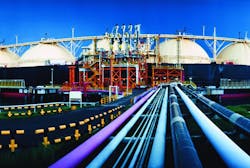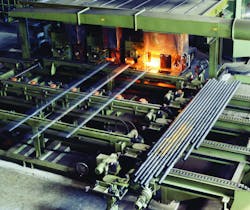8 factors to consider before selecting a transformer
Continued demand is forcing operators to ensure that a transformer is up to the task. They know transformers are critical for extraction, pumping, compressing or even just lighting a facility. From the deep freeze of Alberta winters and blistering Middle East summers to salt-tinged seaside liquefied natural gas (LNG) terminals, transformers must perform reliably and efficiently, or else they will halt operations and industry growth.
When adding or replacing transformers, operators of LNG plants and other oil and gas facilities should consider many questions, including those discussed in this article, to ensure that their operations are optimized and efficient.
1. In what environment will the transformer operate?
Transformers are placed in some of the most diverse and extreme conditions. With heat, moisture and salinity, every application is different. For example, many LNG plants are located near oceans in a corrosive atmosphere of salty air and high temperatures. Transformers operating in these environments require stable paint applications that are specially made to combat corrosion. As another example, fumes from chemical process industries in the vicinity can cause environmental concerns.
2. What operations will the transformer perform?
Transformers in oil and gas installations are used mostly for processing, transportation and liquefaction, but they also perform smaller tasks such as powering lights in a remote location. The type needed depends on its use. Applications range from simple power transformations to complex ones for onerous duty requirements.
3. What size is needed?
The power transfer ratings and characteristics of each unit depend on the load handling conditions. Applications and loads define the specifications and therefore the characteristics to design and build. Normally, a bouquet of sizes and ratings are involved in any large oil and gas processing system.
Transformers inside an LNG facility
4. Is a dry or liquid-type required?
Two distinct types of transformers exist with subcategories for both. The liquid type are insulated and cooled, typically with mineral oil, and the dry type are cooled by air or gas. Both may be needed, depending on the operation.
For example, fire prevention is more important for liquid-type units because they have a higher risk of catching on fire. Depending on the application, liquid-filled transformers could require a containment trough for protection against possible leaks. When choosing transformers, the changeover point between dry types and liquid types is approximately 2.5 mega volt ampere, with dry types used for the lower ratings and liquid types for higher ratings. Also, consider whether the transformer will be installed outside or inside because liquid types are the predominant choice for outdoor applications.
5. What protection level should be specified?
Transformers are expensive investments requiring a number of safeguards to keep them running efficiently. These include high-corrosion resistance on the exterior paint, hot-dipped galvanized radiators, industry standards for enclosure protection, trip and alarm functions for temperature and pressure control, and oil and pressure level monitoring. Some transformers include real-time, constant health monitoring during critical operation.
6. Is the transformer in a remote location or easily accessible?
Any large operation, including LNG plants, has transformers in remote locations and some that are easily accessible. The type of transformer needed — and the protection it has — will depend on the unit’s accessibility.
7. What accessories should be included?
Like any major capital investment, a host of accessories should be considered depending on the transformer’s use. These include a liquid level gage, pressure relief device, sudden pressure relay, liquid temperature gauge, winding temperature gauge, pressure and vacuum gauge, protection current transformers, lightning arrestors, electronic temperature monitoring, basler relay and neutral grounding resistors.
8. Does the transformer adhere to regulations?
Stringent customers seek transformers that conform to the Department of Energy’s 2016 efficiency requirements and to international standards from organizations such as the Institute of Electrical and Electronics Engineers, American National Standards Institute, the National Electrical Manufacturers Association, ASTM International, and Underwriters Laboratories.
Conclusion
As with any large purchase, cost often determines the decision without considering the long-term economics, particularly when engineering, procurement and construction managers and electrical contractors oversee the selection. Purchasing transformers is such an important business decision that it should involve a number of decision makers who consider all the questions discussed in this article.
Balram Ramamurthy heads the Oil & Gas and Renewable Market initiatives for Virginia Transformer Corp. He may be reached at [email protected].

